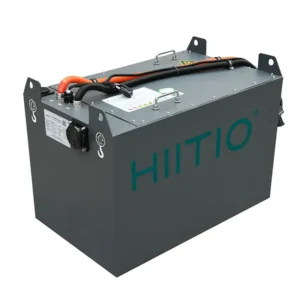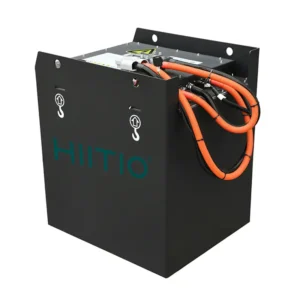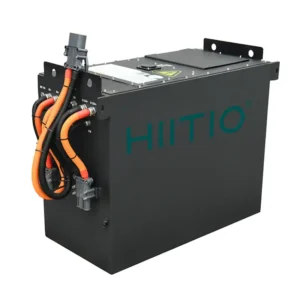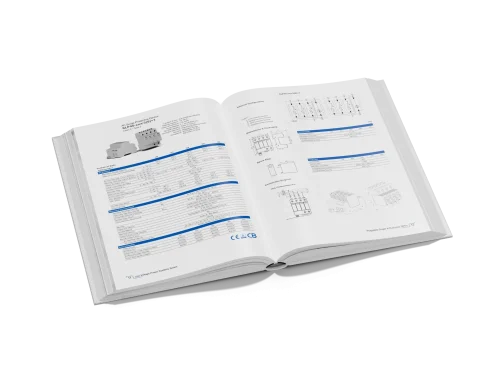AGV (Automated Guided Vehicle) is the core equipment in modern intelligent factories and logistics centers. Its performance and efficiency are highly dependent on the battery system. Choosing the right battery not only affects the operating duration and efficiency of the AGV but also directly impacts the equipment’s lifespan, operating costs, and safety. This article will deeply analyze the key points of AGV battery selection, providing you with a comprehensive and practical selection guide.
I. Common Battery Types and Characteristics for AGVs
1. Lead-acid Battery
Energy Density: The energy density of lead-acid batteries is relatively low, typically ranging from 30 to 50 Wh/kg. This means that for the same power requirement, lead-acid batteries have a larger volume and weight, which increases the overall load of the AGV and has a certain negative impact on its operational efficiency and range.
Charging and Discharging Characteristics: The charging time is relatively long, usually requiring 6 to 8 hours or even longer to fully charge the battery. The discharge depth is limited, generally recommended to be controlled at around 70%, excessive discharge will seriously affect the battery life. Additionally, the self-discharge rate of lead-acid batteries is high, even when not in use, the battery capacity will lose electricity relatively quickly.
Cycle Life: The cycle life is relatively short, generally ranging from 300 to 500 times. As the number of charging and discharging increases, the battery capacity gradually decays, and performance deteriorates significantly. Frequent battery replacement is required, increasing the usage cost and maintenance workload.
Cost and Environmental Impact: The cost is relatively low, with abundant raw materials and mature production technology, which gives lead-acid batteries a certain price advantage in initial procurement. However, lead-acid batteries contain heavy metal lead, and if not handled properly during production, use, and disposal, it may cause severe pollution to the environment.
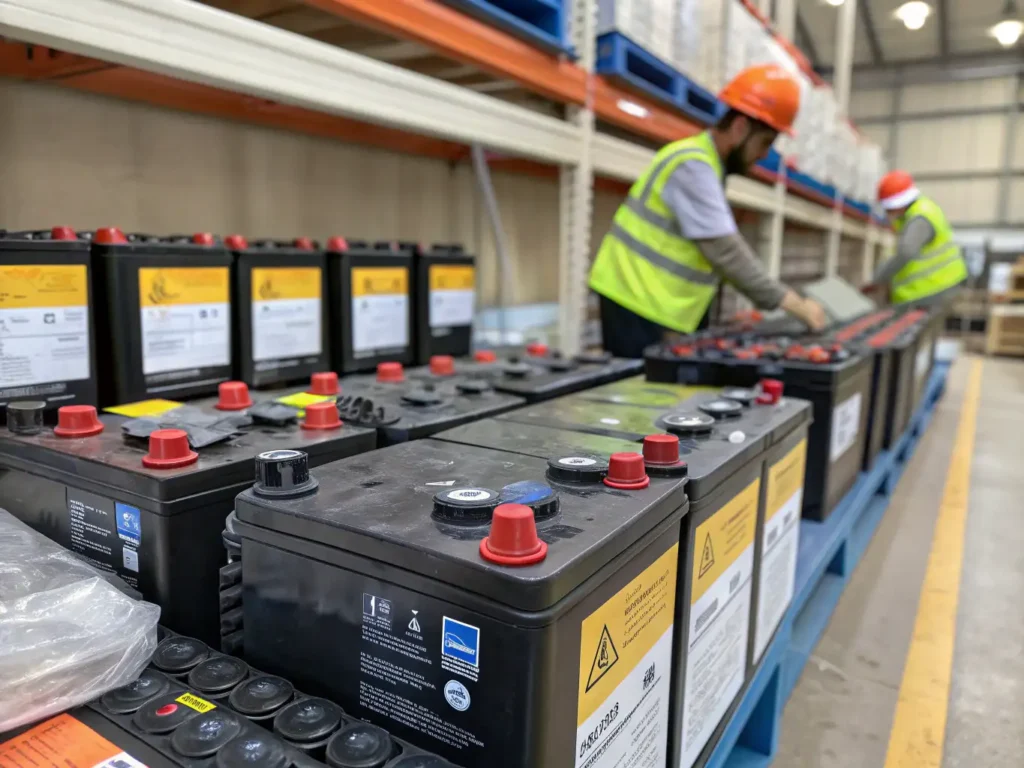
2. Lithium Iron Phosphate Battery
Energy Density: The energy density of lithium iron phosphate batteries is high. Generally, the energy density of lithium iron phosphate batteries is between 100 – 150 Wh/kg, while that of lithium cobalt oxide batteries is even higher, reaching 180 – 300 Wh/kg or more. This makes lithium batteries smaller in size and lighter in weight when the same power demand is required, which is beneficial for improving the operational efficiency and endurance of AGVs.
Charging and Discharging Characteristics: The charging speed is fast, usually taking 1 – 2 hours to fully charge. Some high-performance lithium batteries even support faster charging speeds. The discharge depth is deep, reaching over 90%, which can make better use of the battery capacity. The self-discharge rate is low, and the battery loss of power is small during long-term parking.
Cycle Life: The cycle life is long, with lithium iron phosphate batteries having a cycle life of over 2000 – 3000 times, and lithium cobalt oxide batteries can reach around 1000 – 2000 times. This means that during long-term use, the replacement frequency of lithium batteries is lower, reducing the usage cost.
Cost and Environmental Friendliness: The initial purchase cost is relatively high. However, due to its long lifespan and low maintenance cost, in the long run, the total cost has certain advantages. In terms of environmental friendliness, lithium batteries do not contain toxic heavy metals and are environmentally friendly.
EXLOPRE MORE HIITIO Lithium Iron Battery
3. Lithium-Trihydride
Advantages: Highest energy density (maximum capacity for the same volume/weight), good low-temperature performance.
Disadvantages: Relatively lower safety compared to lithium-iron phosphate (more sensitive to thermal runaway), typically shorter cycle life than lithium-iron phosphate (800-2000 cycles), higher cost.
Cost and Environment: Extremely strict on space and weight limitations, requires maximizing single trip range, and has very comprehensive safety protection measures (BMS, thermal management) in AGVs. The application of lithium-trihydride in AGVs is relatively less compared to lithium-iron phosphate.
Others: Lithium-tetrafluorophosphate (extremely long lifespan, ultra-fast charging, ultra-wide temperature range, but extremely low energy density, extremely high cost, and has a niche application in AGVs).
II. Key Factors for AGV Battery Selection
1. Working Cycle and Battery Range Requirements
Firstly, it is necessary to clearly define the daily working duration and operation mode of the AGV. If the AGV needs to perform continuous operations for a long time, such as in a 24-hour uninterrupted logistics warehousing environment, then the battery’s range and cycle life requirements are higher. At this time, lithium batteries, especially lithium iron phosphate batteries, due to their long cycle life and high discharge depth characteristics, are more suitable for this high-intensity working demand.
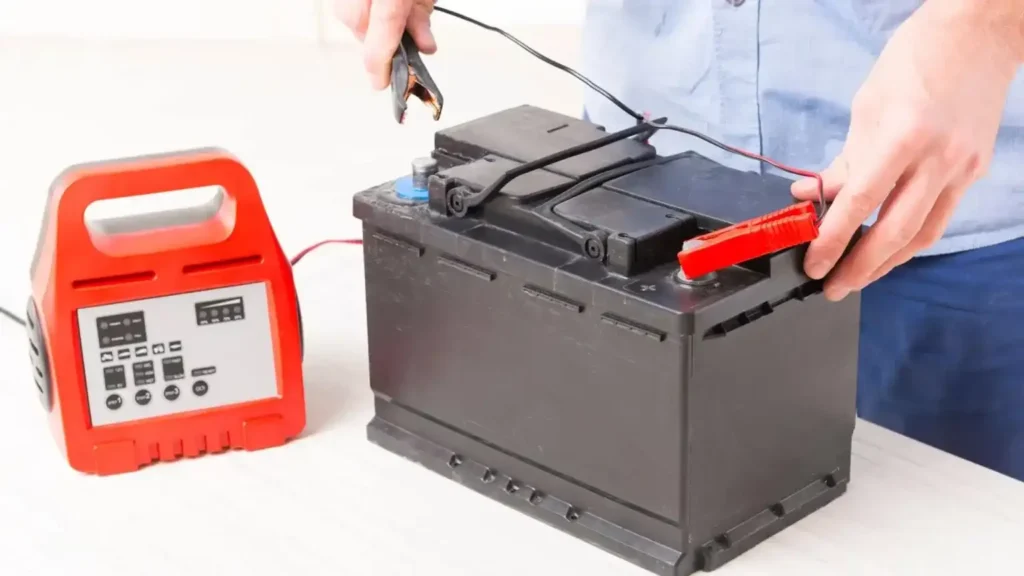
Based on the AGV’s travel path, speed, and load conditions, accurately calculate the required battery range. Relevant data can be obtained through actual testing or simulation operation. Then, by combining the energy density and discharge characteristics of the batteries, select the type and capacity of batteries that can provide sufficient power to meet the range requirements.
2. Load and Speed Requirements
When an AGV needs to transport heavy goods, the output power requirement for the battery is higher. At this time, a battery with a high discharge rate should be selected, such as lithium iron phosphate battery, which can provide a large current in a short time and meet the high power demand of AGV’s startup and acceleration. Meanwhile, high-load operation will increase the burden on the battery, so the battery needs to have good stability and durability to ensure reliable performance under long-term high-load working conditions.
For AGVs that need to operate at high speed, the battery not only needs to have high energy density to ensure range, but also needs to have a fast response capability, able to provide sufficient power to maintain high-speed driving. Lithium batteries have obvious advantages in this regard, as their fast charging and discharging characteristics and high power output capabilities can well meet the requirements of AGV’s high-speed operation. In addition, the vibration and shock of the AGV during high-speed operation may have certain impacts on the battery, so the shock resistance and protection performance of the battery need to be considered.
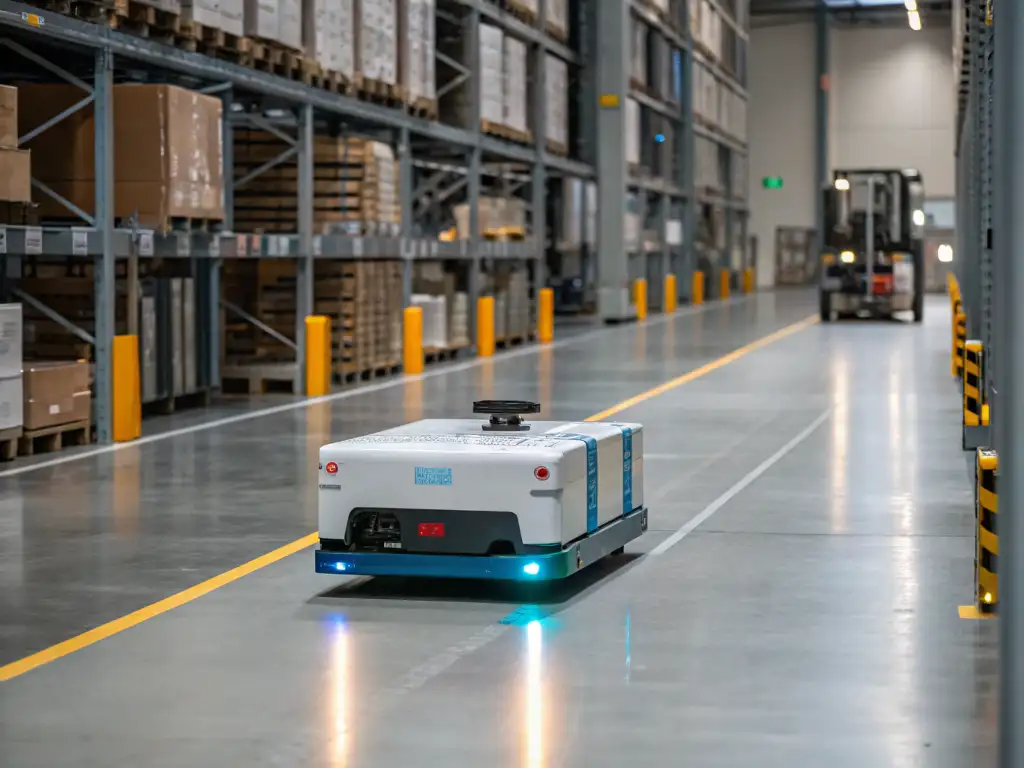
3. Life Cycle Cost
There are significant differences in the initial purchase prices of different types of batteries. Lead-acid batteries have relatively lower prices and are suitable for projects with limited budgets; nickel-cadmium and nickel-metal-hydride batteries have moderate costs; lithium batteries, especially high-end lithium-ion batteries and lithium iron phosphate batteries, have higher initial purchase costs. However, considering only the initial purchase cost is not comprehensive; factors such as battery lifespan, maintenance costs, and replacement costs also need to be taken into account.
The maintenance workload for lead-acid batteries is large, requiring regular checks of the electrolyte level, replenishment of distilled water, and balanced charging, and their cycle life is short, leading to frequent battery replacements and higher usage and maintenance costs. Nickel-cadmium and nickel-metal-hydride batteries have relatively simple maintenance, but due to their energy density and cycle life limitations, they also generate certain costs during long-term use. Lithium batteries have lower maintenance costs, only requiring regular checks of the battery status and simple maintenance, and their long cycle life significantly reduces the frequency of battery replacements, effectively reducing usage and maintenance costs in the long run.
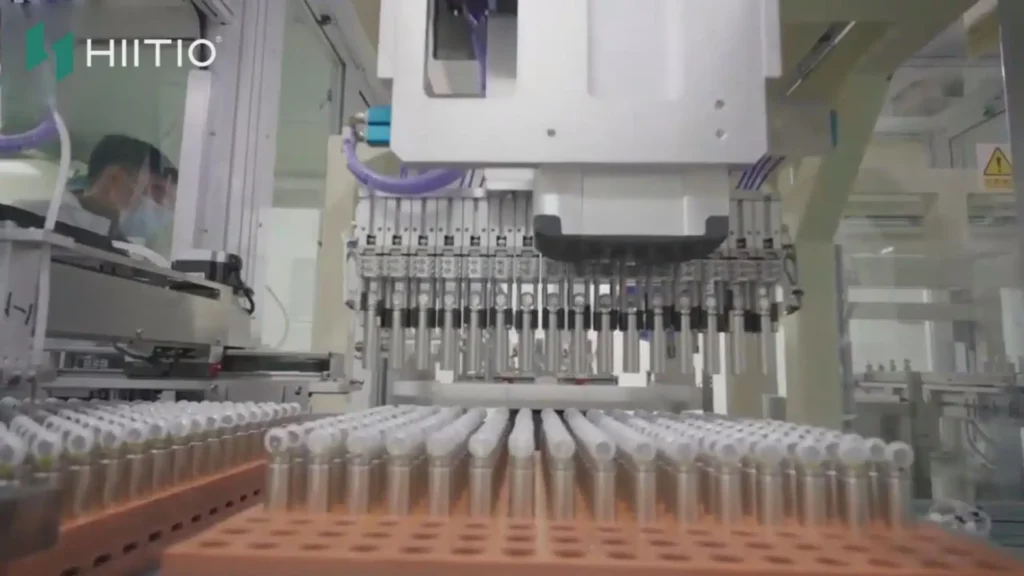
III. Battery Selection Suggestions for Different Types of AGVs
1. Light-duty AGVs (Load < 500kg)
Light-duty AGVs are typically used in material handling and production line distribution in industries such as electronics, medicine, and food. These scenarios have high requirements for the flexibility and operational efficiency of AGVs, with relatively light loads, complex running paths, and frequent start-stop operations.
Lithium batteries are the preferred choice for light-duty AGVs. Due to their high energy density and light weight, they can effectively reduce the self-weight of the AGV, improving its running speed and flexibility. Additionally, the fast charging feature and long cycle life of lithium batteries can meet the frequent usage requirements of light-duty AGVs, reducing charging waiting time and battery replacement frequency. Among lithium batteries, lithium iron phosphate batteries, due to their higher safety and stability, are more suitable for use in areas with high personnel density and strict environmental requirements.
2. Medium-sized AGVs (Load capacity 500kg – 2000kg)
Medium-sized AGVs are widely used in industries such as automotive manufacturing and logistics warehousing, mainly undertaking the transportation and handling of medium-weight goods. These scenarios have high requirements for the endurance, load capacity, and operational stability of AGVs.
For medium-sized AGVs, lithium batteries are also recommended. Depending on the specific application scenario, if the working environment temperature is high or if safety requirements are more stringent, lithium iron phosphate batteries are a better choice. Its long cycle life and good high-temperature resistance can ensure the reliability of AGVs during long-term, high-load operation.
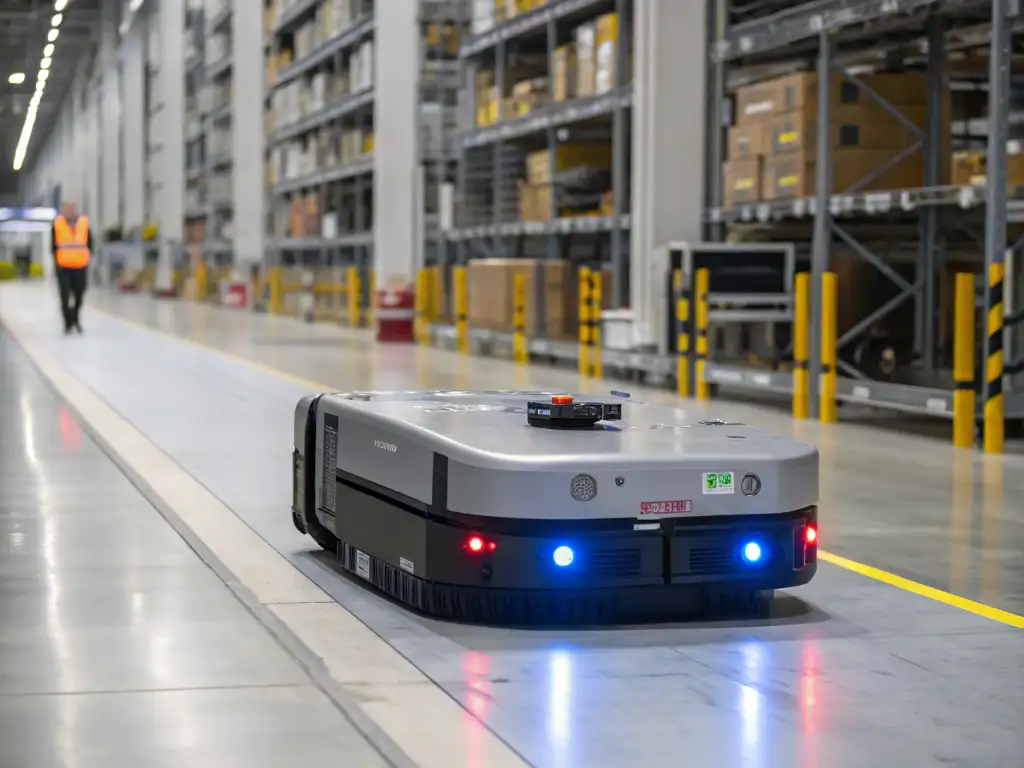
3. Heavy-duty AGVs (Load > 2000kg)
Heavy-duty AGVs are mainly used in industries such as steel, ports, and mines, for transporting large and heavy goods. The operating environment is relatively harsh, and the requirements for the power performance, load capacity, and durability of AGVs are extremely high.
Given the working characteristics and requirements of heavy-duty AGVs, lithium iron phosphate batteries are a relatively ideal choice. Their high discharge rate can meet the demand for large currents during the startup and handling of heavy objects by heavy-duty AGVs. The long cycle life can reduce the cost of frequent battery replacements in harsh environments, and the high safety and stability can ensure reliable operation under heavy-load and high-load conditions. In addition, to address the high energy consumption requirements of heavy-duty AGVs, a large-capacity battery pack may need to be selected, and special design and optimization of battery cooling and protection performance are also required.
Conclusion
The selection of AGV batteries is a complex and crucial process that requires comprehensive consideration of various factors such as working cycle, load and speed requirements, usage environment, safety, and life cycle cost. Different types of batteries have their own advantages and disadvantages in terms of performance, cost, and applicable scenarios, and no single battery can be suitable for all AGV application scenarios. During the actual selection process, a comprehensive analysis and evaluation should be conducted based on the specific working requirements and usage conditions of the AGV, and the most suitable battery type and specification should be selected to ensure that the AGV can operate efficiently, stably, and safely.
Looking for a powerful, reliable, and safe battery solution for your AGV systems? HIITIO’s LiFePO4 lithium battery offers outstanding energy density, fast charging, long cycle life, and excellent thermal stability. Choose HIITIO and power your AGV operations with confidence!


